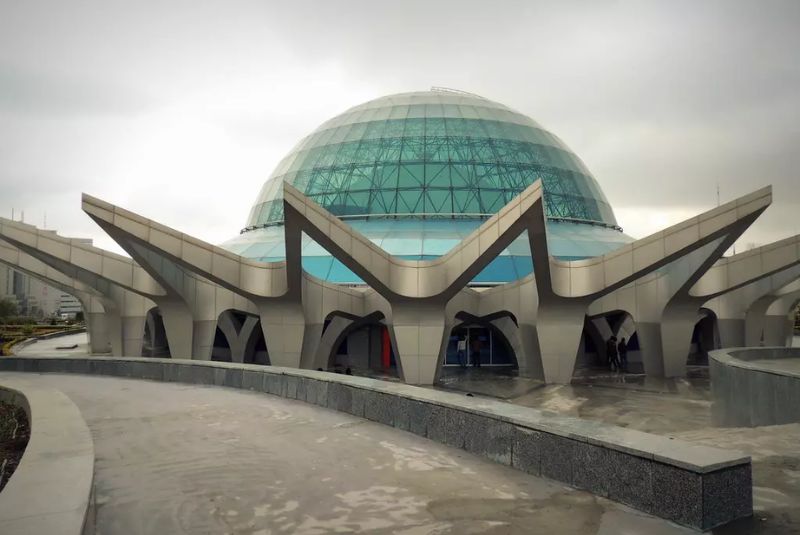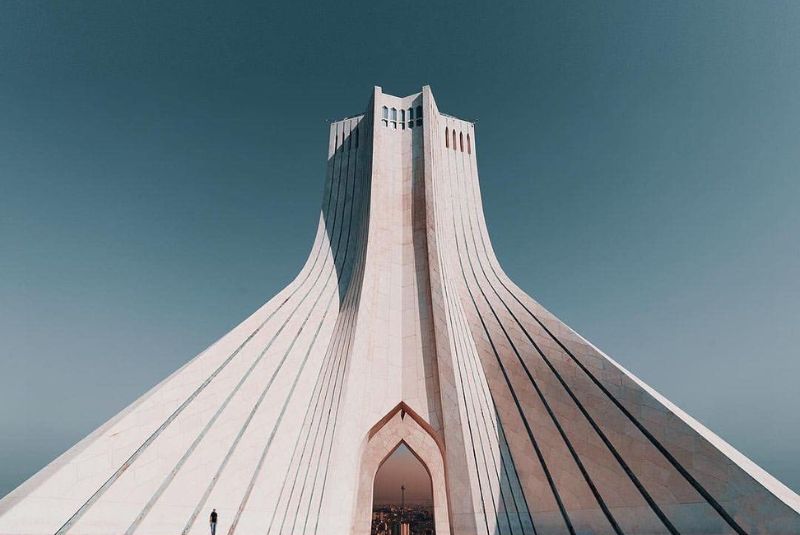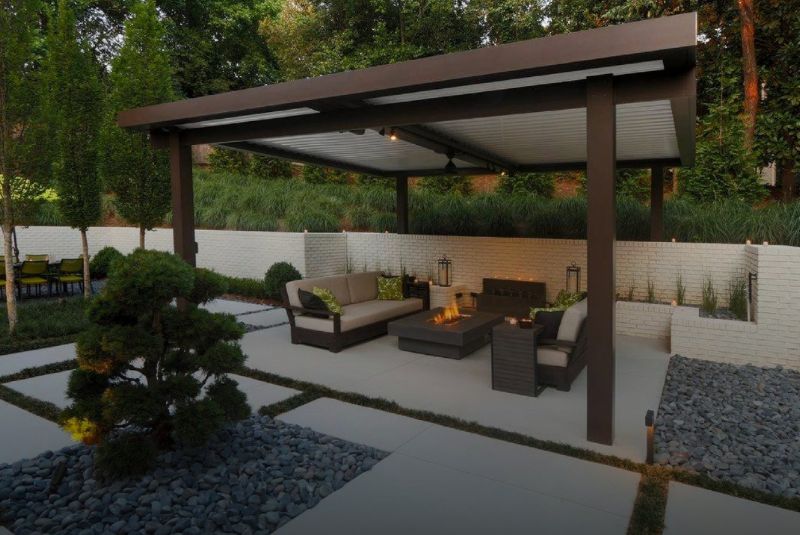Iranian Modern Architecture: Tradition & Innovation Blend
Iran boasts a long and illustrious architectural history, stretching back to the ancient civilizations of Persia.
From the grand palaces of Persepolis to the intricate mosques of Isfahan, Iranian architecture has continually impressed and inspired the world. The 20th century witnessed the emergence of a distinct architectural movement in Iran: Iranian modern architecture. This movement incorporated the established design traditions of the past with contemporary architectural trends, resulting in a unique style recognized for its thoughtful blend of heritage and innovation.
Characteristics of Modern Persian Architecture

Trends in modern Iranian architecture are distinguished by several key characteristics that reflect a thoughtful dialogue between tradition and contemporary design principles.
Climate Responsiveness
- Modern Iranian architects prioritize designing structures that respond effectively to the country's hot and arid climate. This is achieved by incorporating elements like central courtyards, which provide natural ventilation and light.
- Windcatchers (badgirs), with their distinctive vertical structures, are another traditional element reimagined in modern design. These towers harness prevailing winds to cool interior spaces passively.
- The strategic use of water elements, such as pools and fountains, further contributes to natural cooling through evaporative processes. These features echo the importance of water management and oasis creation in historical Iranian architecture.
Materiality
- Iranian modern architects often favor the use of local and sustainable materials like brick, stone, and mudbrick. This not only reduces the environmental impact of construction but also fosters a sense of cultural identity within the built environment.
- These materials possess inherent thermal properties that contribute to passive cooling and insulation, demonstrating an understanding of how material selection can address climatic challenges.
- It's important to note that this focus on local materials stands in contrast to the international modernist movement's emphasis on steel and glass, which can be less suitable for hot climates.
Integration of Traditional Elements
- A defining characteristic of Iranian modern architecture is the creative incorporation of traditional design elements. This can be seen in the use of geometric patterns, a hallmark of Islamic geometric art, which are often translated into modern building facades and interiors.
- Mosaics, another traditional decorative technique, are reinterpreted with contemporary materials and motifs.
- Calligraphy, a revered art form in Iranian culture, can be subtly integrated into architectural details, adding a layer of cultural significance.
- Furthermore, the concept of "cheman" (meaning "garden") influences the design of many modern buildings, creating serene spaces that integrate nature into the built environment, reminiscent of traditional courtyards and gardens.
Examples of Iranian Modern Architecture

Iranian modern architecture manifests across various building types, showcasing its adaptability and dynamism. Here are a few prominent examples:
- Tehran Museum of Contemporary Art (TMCA): Designed by Kamran Diba in the 1970s, the TMCA features a distinctive latticework facade that filters sunlight and evokes traditional geometric patterns.
- Tabiat Bridge, Tehran: Completed in 2004 by Leila Araghian, this multi-level pedestrian bridge boasts a sinuous form and incorporates landscaping, offering a unique public space in the heart of Tehran.
- Azadi Tower, Tehran: Designed by architect Hossein Amanat, the tower's architectural brilliance lies in its fusion of Sassanian and Islamic influences. The iconic "Y"-shaped structure symbolizes the intertwining of ancient history and contemporary aspirations. Its marble façade, adorned with intricate calligraphy and symbolic patterns, reflects a commitment to preserving cultural identity within a modern context.
- Atiq Mosque, Shiraz: Designed by Hossein Humayunfer in the 1960s, this mosque features a minimalist concrete structure with an innovative, skylight-illuminated prayer hall, demonstrating a modern reinterpretation of traditional mosque design.
- Vali-e Asr Mosque, Tehran: Built by Mohsen Makhlooghi in the 1970s, this mosque integrates traditional elements like a central courtyard and geometric mosaics with a modern, geometric dome, creating a harmonious blend of styles.
- BaghShahr Villa, Isfahan: Designed by DAV Architects in 2012, this villa utilizes traditional materials like brick and incorporates courtyards and windcatchers for natural ventilation, while its modern, geometric form reflects contemporary design trends.
Pioneers of Modern Architecture in Iran

Contemporary architectural marvels in Iran serve as vibrant evidence of the blend between innovation and cultural legacy. Visionary architects have been instrumental in harmonizing tradition with modernity, crafting buildings that not only reshape cityscapes but also enrich the overarching tapestry of Iranian heritage. Highlighting a few of the exceptional Iranian modern architectural artists who have made an enduring impact on the current architectural panorama are:
- Fariborz Sahba
- Leila Araghian
- Faryar Javaherian
- Fluid Motion Architects
- Next Office
- ZAV Architects
Modern Iranian Architecture: Beyond the Building

While Iranian modern architecture is often admired for its individual structures, its influence extends beyond the realm of buildings. Modernization has significantly impacted urban planning and infrastructure in Iranian cities, shaping the overall urban environment.
- High-rise Buildings and Skyscrapers: The construction of high-rise buildings and skyscrapers has undeniably altered Tehran's profile. These structures often incorporate sustainable design principles like energy-efficient facades and utilize local materials where possible.
- Green Spaces and Parks: Recognizing the importance of green spaces in urban environments, modern planning initiatives in Tehran prioritize the creation and preservation of parks and public gardens. These areas not only provide recreational areas for residents but also contribute to improved air quality and a more balanced urban ecosystem.
- Green Roofs and Energy-Efficient Designs: The implementation of green roofs on buildings is gaining traction. These roofs not only provide insulation but also contribute to stormwater management and urban heat island mitigation.
- Pedestrian-Friendly Urban Planning: Creating pedestrian-friendly environments with dedicated walkways, bike lanes, and accessible public transportation options is another key aspect of modern architecture and urban planning in Iran.
Final Takeaway
In modern Iranian architecture, tradition and new ideas come together to shape the landscape. Architects create buildings that tell stories, each adding to Iran's path toward a bright and eco-friendly future. The mix of old and new keeps evolving, showing how Iran embraces change while staying connected to its cultural roots.
Share your story!
Comment below and let us know about your Experience.
Your story inspires others!


Comment
Leave a Comment